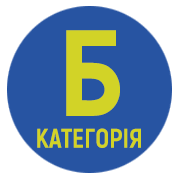Legal clinics in the mechanism of dual education: analysis of results of pedagogical experiment
DOI:
https://doi.org/10.35774/app2021.02.069Keywords:
legal clinics, free legal aid, socially unprotected segments of the population, dual educationAbstract
The article analyzes the provisions of legal acts regulating the legal status of legal clinics in the mechanism of dual education, as well as analyzes the results of pedagogical experiment. The genesis of scientific views on the role of legal clinics in legal education is also analyzed. with the help of legal clinics.
The author concludes that clinical legal education within the dual, can have a positive impact on the quality of education in law schools in general. Working with real people and discussing real problems often increases students' interest in legal issues, encouraging them to be more active in learning. Trying to solve real problems helps students learn to think critically. Clinical legal education can also provide students with hands-on experience through collaboration with stakeholders. The system of "practice", currently adopted in Central and Eastern Europe, provides students with the opportunity to do internships on the basis of practice during their studies. This will allow students to think about what field they will be working on in the future - or even whether they want to be a lawyer at all - at the stage of their studies that allows them to change the content of the learning process accordingly. As well as the opportunity to see their strengths and weaknesses before graduation. This, in turn, allows them to improve their knowledge together with teachers.
References
Clarenceб J. Dias (2017). Research on Legal Services and Poverty: Its Relevance to the Design of Legal Services Programs in Developing Countries, 1975 WASH. U. L. Q. 147. Retrieved from https://openscholarship.wustl.edu/law _lawreview/vol1975/iss1/11(Accessed 2 June 2021) [in English].
Sood S. (2019) Convergence in the Practice of Legal Aid to Improve Access to Justice. Asian Journal of Legal Education. 2019;6(1-2):18-28 [in English]. https://doi.org/10.1177/2322005818812612
Baxi, Upendra. (2021). Legal Assistance to the Poor: A Critique of the Expert Committee Report. Economic and Political Weekly, 10 (27), 1005–1013 [in English].
Barendrecht, J. M. (2011). Legal aid, accessible courts or legal information? Three access to justice strategies compared. Global Jurist, 11(1), 1-26. Retrieved from http://www.bepress.com/gj/vol11/iss1/art6/ [in English]. https://doi.org/10.2202/1934-2640.1374
Batlan, F. (2015). Women and Justice for the Poor: A History of Legal Aid, 1863-1945. Studies in Legal History Series. New York: Cambridge University Press. [in English]. https://doi.org/10.1017/CBO9781316026809
Moppett, Samantha A. & Vinson, Kathleen Elliott (2017). Closing the Legal Aid Gap One Research Question at a Time, 18, p.15, Suffolk University Law School Research Paper No. 17-11, Retrieved from https://ssrn.com/abstract=3008767 (Accessed 13 June 2021) [in English].
Mossman, Mary Jane, Karen Schucher & Claudia Schmeing (2010). Comparing and Understanding Legal Aid Priorities: A Paper Prepared for Legal Aid Ontario. Windsor Review of Legal and Social, 29, 149-226 [in English]. https://doi.org/10.2139/ssrn.1640533
Panasenko, E. (2016). Рedagogical experiment: formation and development in postwar period, 3, 5-17 [in English].
Kremen, V. H. (2008). Entsyklopediya osvity [Education Encyclopaedia]. Kyiv: Yurinkom Inter [in Ukrainian].
Spirin, O. M., & Kolos, K. R. (2011). Pedagogical experiment object for teachers information competency through distance education. Information Technologies and Learning Tools, 25(5) [in English]. https://doi.org/10.33407/itlt.v25i5.555





